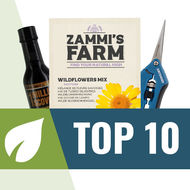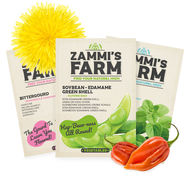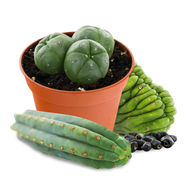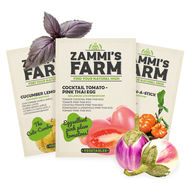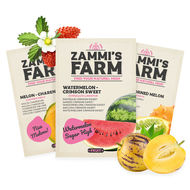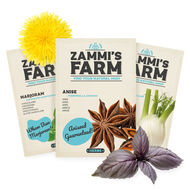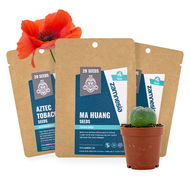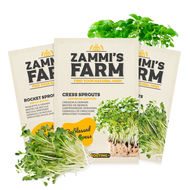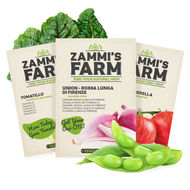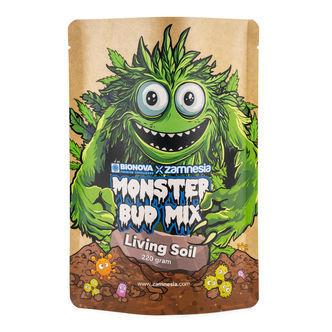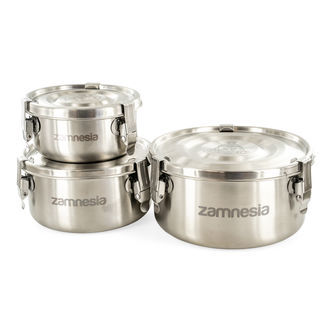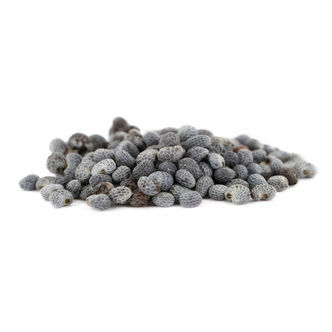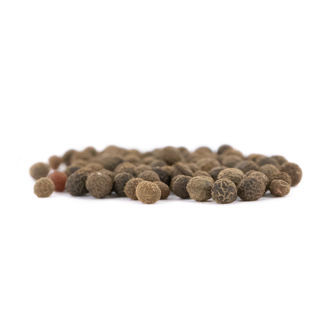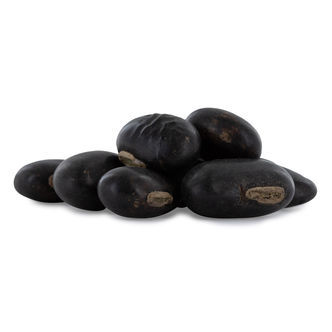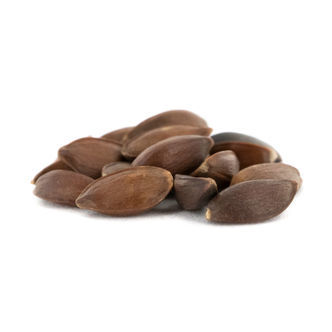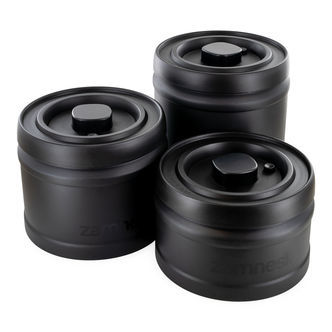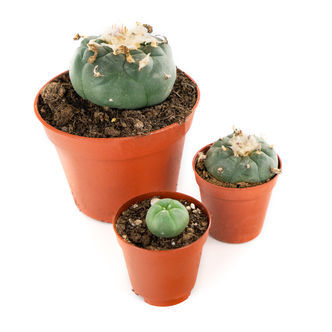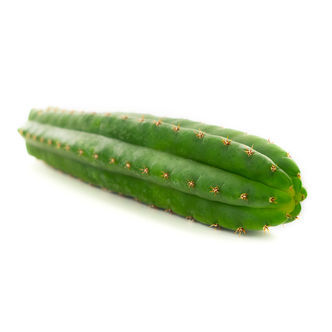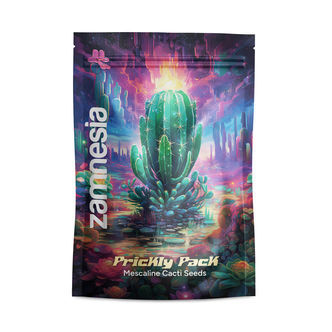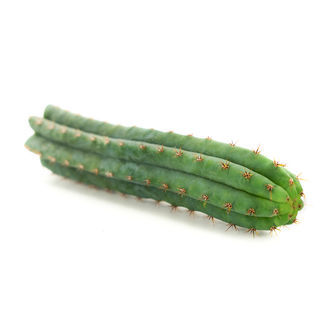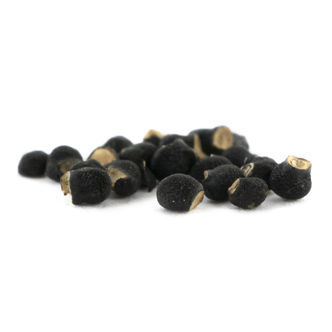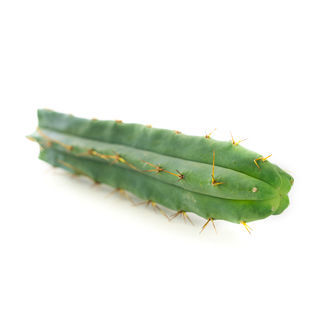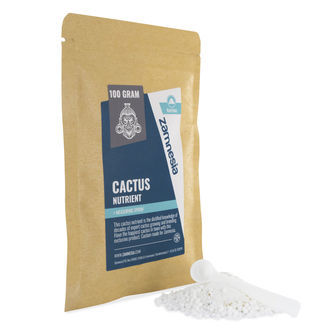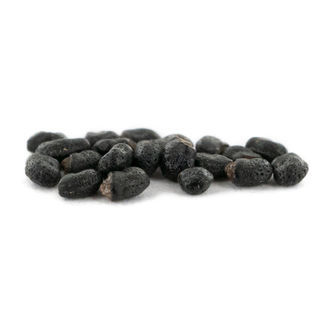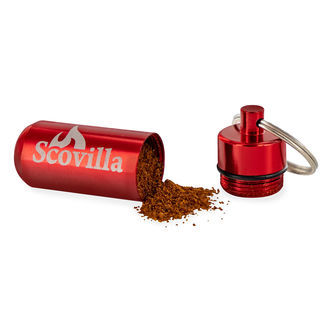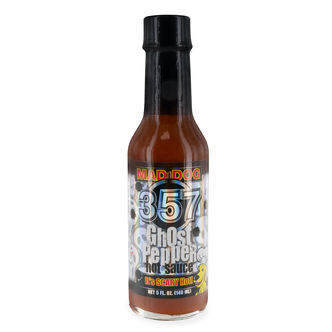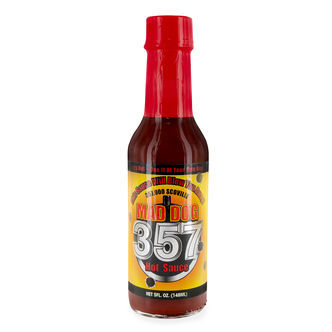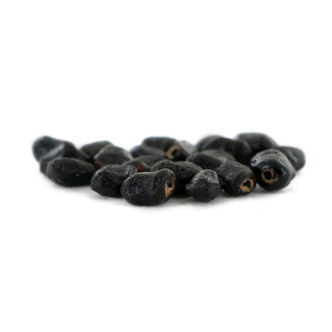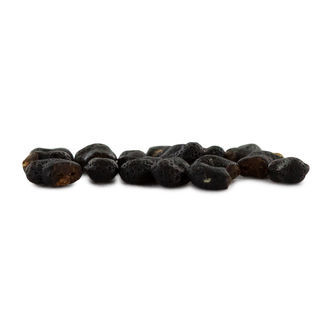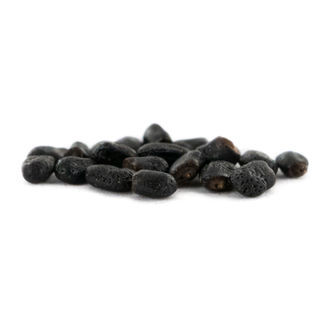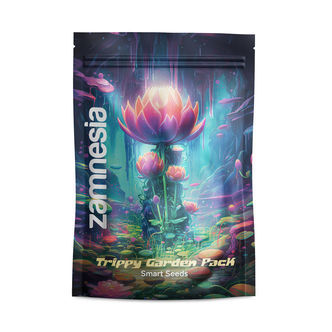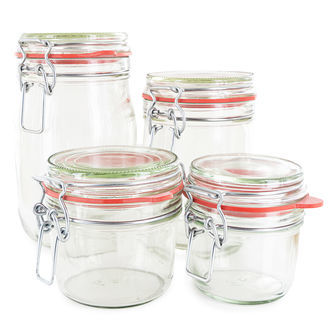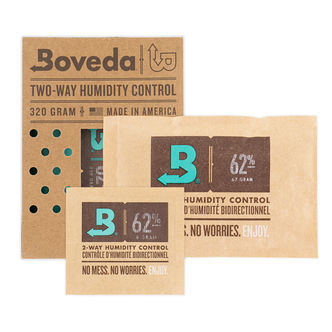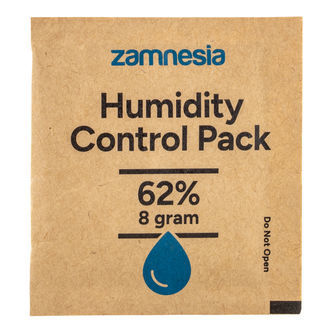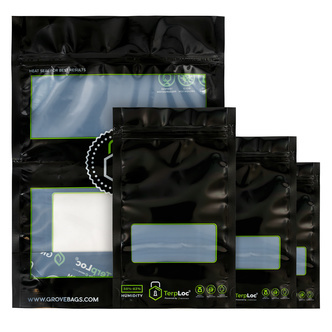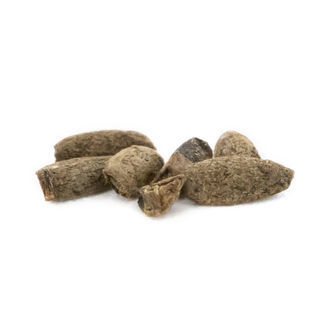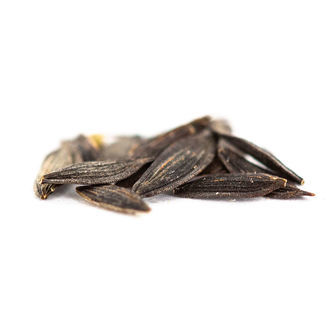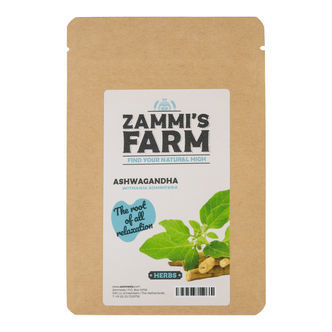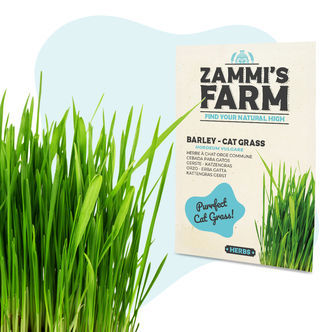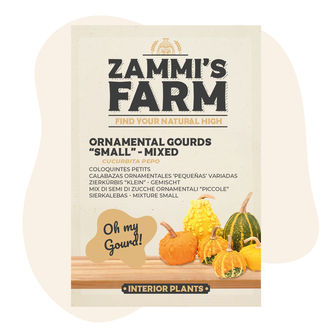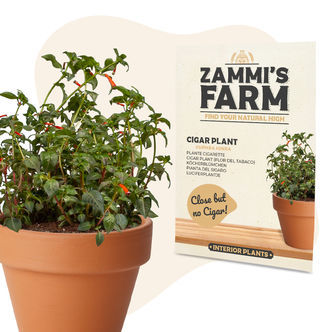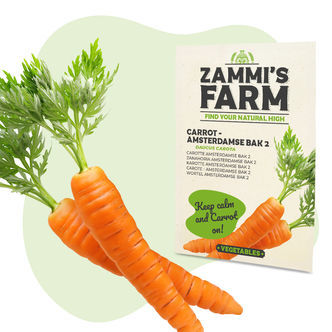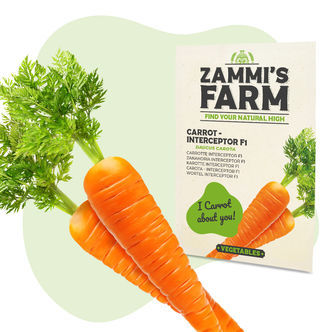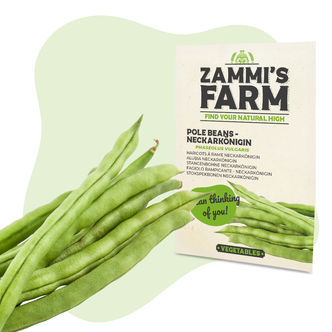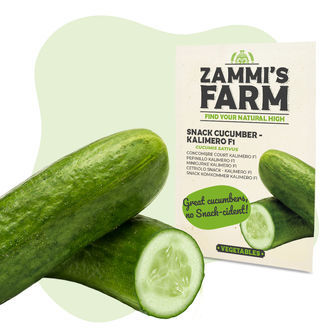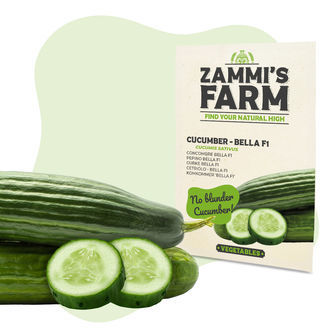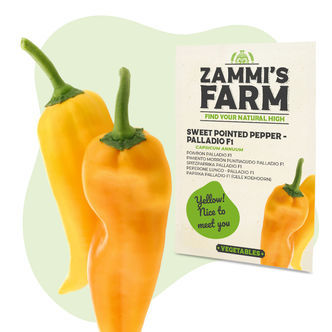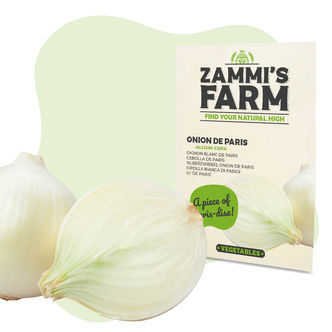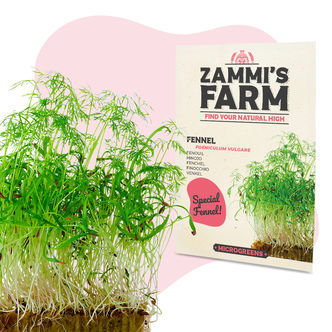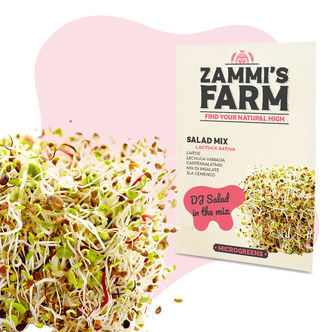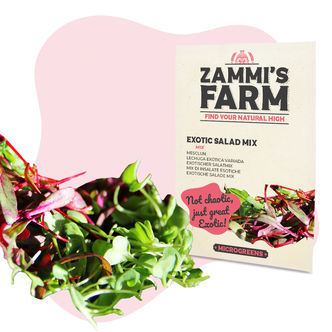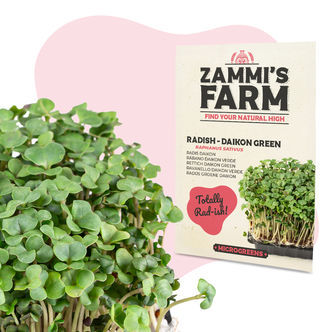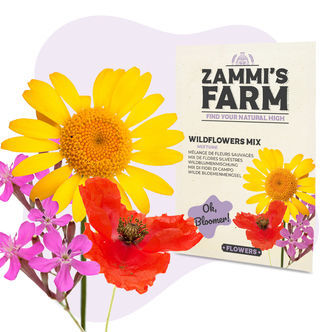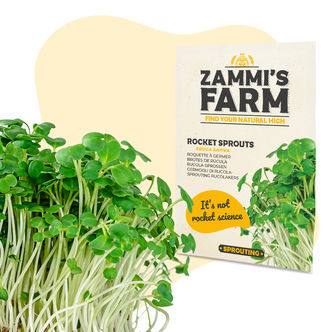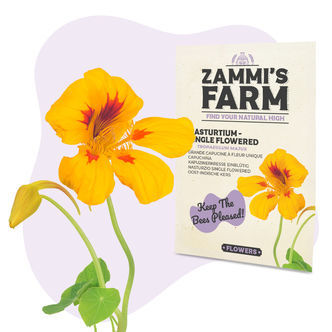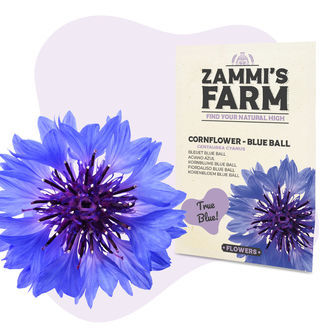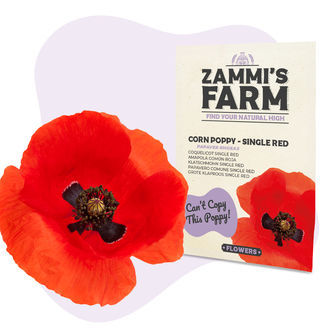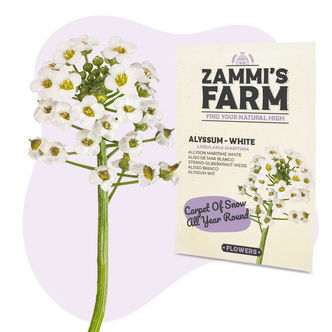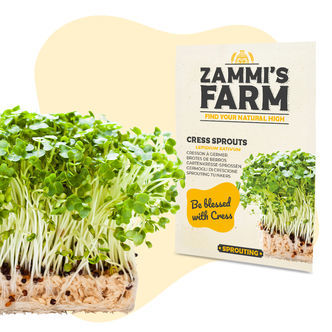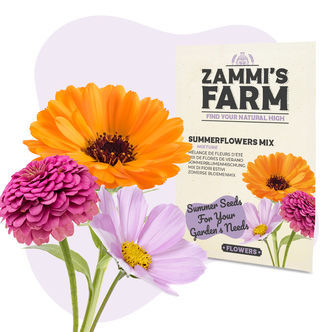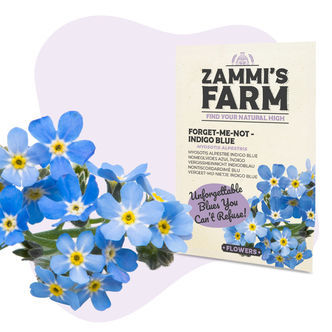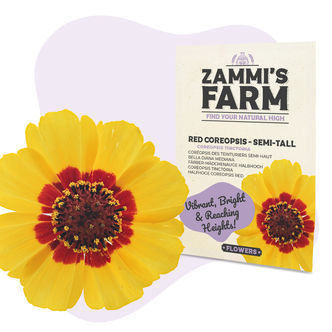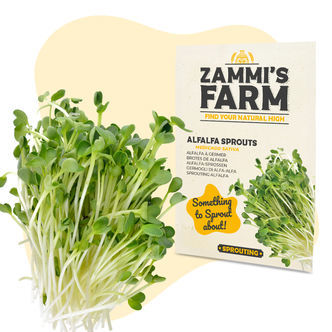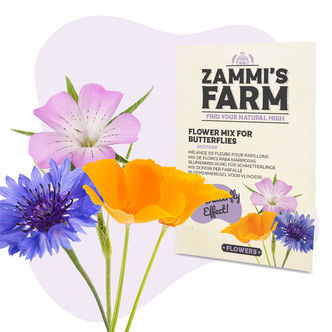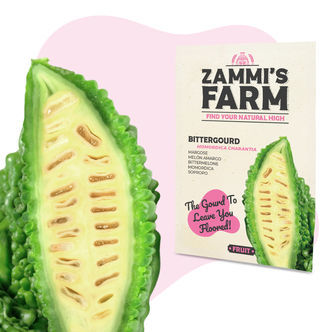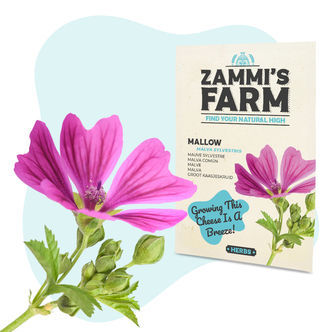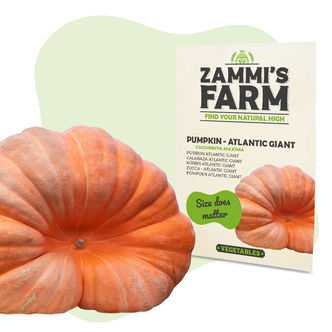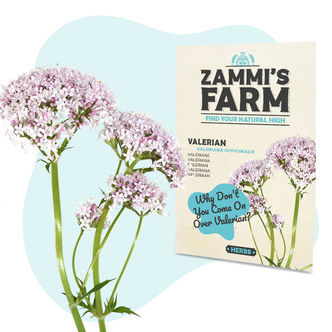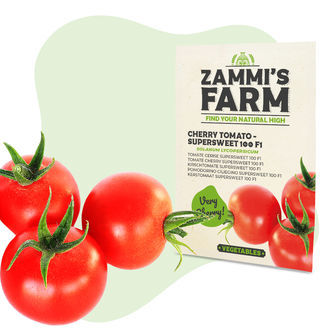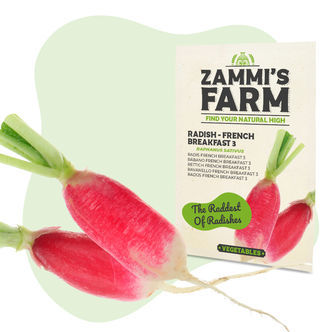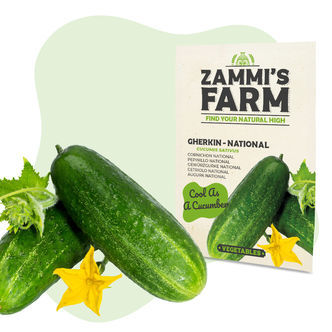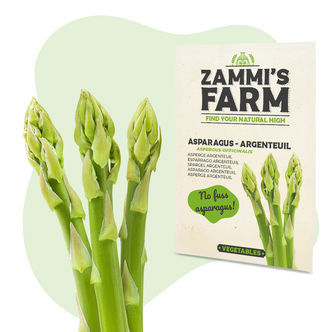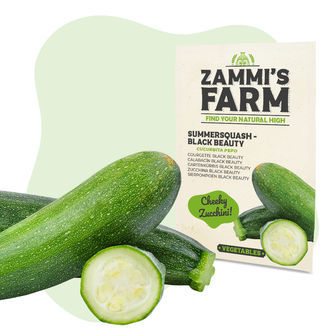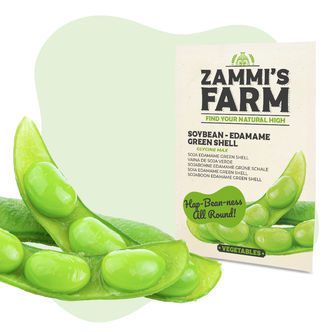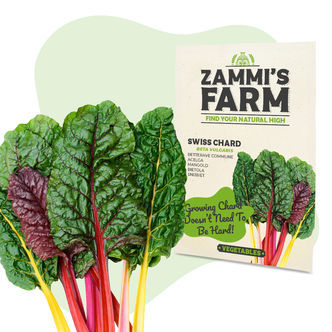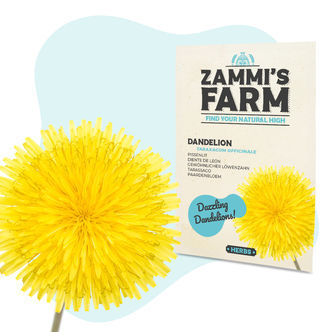Plant Seeds
Discover our diverse range of plant seeds, categorized for your gardening convenience. From chili and pepper seeds to exotic varieties, our selection ensures you find the perfect match for your green thumb. Explore subcategories like edible and vegetable seeds for your culinary adventures, or wellness and companion plants to enrich your garden’s ecosystem. Delve into the intriguing world of psychoactive seeds or start an indoor garden with our interior plant seeds. Every seed promises quality and the potential for vibrant growth.
Subcategories
Monster Bud Mix - Living Soil
Our Monster Bud Mix has long helped growers achieve great results, be it cultivating cannabis, growing fruits and vegetables, or caring for ornamentals. Now, we've released an enhanced formula that will bring the health and diversity of your soil life to new heights! Introducing Monster Bud Mix Living Soil—the perfect product for growers looking to take their garden to the next level.
Zamnesia Curing Container
Keep your stash in perfect condition with the Zamnesia Curing Container. Available in 0.3 l, 0.65 l, and 1 l sizes, this airtight container helps maintain optimal moisture levels to lock in flavour, aroma, and potency. Featuring the Zamnesia logo on the lid, the Curing Container is a stylish and practical solution for proper curing and storage. It's simple, effective, and built to last!
Poppy (Papaver somniferum) 5 grams
Poppy (Papaver somniferum) is the plant from which opium, morphine, and heroin are made. The poppy seeds themselves don’t contain any alkaloids. With Zamnesia Poppy Seeds, you can grow your own poppy plants at home with ease!
California Poppy (Eschscholzia californica) 100 seeds
California poppy makes a stunning addition to many ornamental gardens, earning attention due to its bright and vibrant orange shades.
Velvet bean | Mucuna pruriens
The Velvet bean (Mucuna pruriens) is a tropical plant that has long been used in many cultures around the world.
Green Mormon Tea | Ephedra viridis Seeds
Green Mormon tea (Ephedra viridis), also known as green ephedra or Indian tea, is a shrub that grows in dry areas of the Western United States. 20 seeds
VacuFresh Steel Container (Zamnesia)
VacuFresh steel containers are opaque containers useful for stashing herbs or anything else that requires a stable environment free from moisture, light, or air. A simple button on the top sucks out the air, creating a vacuum, which also makes it suitable for curing cannabis. Made from tough steel, it stays clean and protects the contents from light while maintaining humidity.
Peyote (Lophophora williamsii)
Peyote, considered a living god, El Mescalito has a long history among the natives of northern Mexico and Southwestern USA – at least 5700 years, say archeologists. Then it was demonized and driven underground by the Spanish conquerors in the 16th century. But thanks to the wonders of modern cultivation, you can have one of these sacred Lophophora williamsii in your own home.
San Pedro (Echinopsis pachanoi)
A.k.a. Trichocereus pachanoi. The San Pedro cactus (Echinopsis pachanoi) originates from Peru and Ecuador. This cactus contains the psychoactive compound mescaline and plays a very important part in Latin American shamanic culture. We sell cuttings in different sizes that will effortlessly resume their growth once they are put back in the ground.
Prickly Pack - Mescaline Cacti Seeds
This variety pack of cactus seeds contains everything you need to start cultivating your own mescaline cacti at home! There are numerous species of mescaline-containing cacti, and each one has a slightly different combination of alkaloids, giving each distinct effects. With this pack, you have a range of mescaline cactus seeds to experiment with.
Peruvian Torch (Echinopsis peruviana)
Previously known as Trichocereus peruvianus. This cactus thrives at an altitude of 2000-3000 meters in it's natural habitat, the Andes in Peru and Ecuador. The Peruvian Torch grows at a high rate, contains the psychoactive compound mescaline and has green skin with a light blue glow. We sell different sizes - small, medium and large - all of which are perfect for home cultivation.
Peyote (Lophophora williamsii) 20 seeds
With our freshly harvested high quality Lophophora williamsii (Peyote) seeds you can now grow your own Peyote cacti at home. As compared to fully grown Peyote cacti plants, cultivating your own Peyote can be more economic because you can grow them at relatively low cost. Plus, being able to watch your Peyote seeds grow to full-grown flowering plants can make for a fascinating hobby all on its own!
Bolivian Torch (Echinopsis lageniformis)
Formerly known as Trichocereus bridgesii. This cactus is naturally found in the Bolivian mountains. The natives of Bolivia call this cactus Achuma or Wachuma. We have several sizes of cuttings of the Bolivian Torch in stock.
Cactus Nutrient
This cactus nutrient is the distilled knowledge of decades of expert cactus growing and breeding. Have the happiest cactus in town with this exclusive product. Custom made for Zamnesia.
San Pedro (Echinopsis pachanoi) 20 seeds
Echinopsis pachanoi, the original San Pedro cactus is one of the sacred cacti of South America. For centuries, this cactus has played an important role in Shamanic culture. The cactus is a native to Bolivia and contains psychoactive compounds, the most important one Mescaline. With our fresh Echinopsis pachanoi (San Pedro) seeds you can now easily grow your own San Pedro cacti at home!
Portable Pepper Bomb (Scovilla) 1.5g
These Portable Pepper Bombs from Scovilla allow you to carry 1.5 grams of your favourite chilli powder with you everywhere you go. If you regularly find yourself disappointed at the mildness of your "spicy" meals, be disappointed no longer! Now, you can spice things up to your heart's content.
Ghost Pepper Edition Hot Sauce (Mad Dog 357)
Made from one of the hottest chillies in the world—the Bhut Jolokia, or Ghost Pepper—rest assured that this sauce by Mad Dog is extremely hot. On the Scoville scale, it comes in around 150,000 SHU. Suitable for adding to dishes or fiery dipping, get your heat fix here!
Hot Sauce (Mad Dog 357)
Featured on Hot Ones, Mad Dog 357's hot sauce is an extremely powerful chilli sauce made in Sudbury, Massachusetts. With a Scoville rating of 357,000, Mad Dog 357 hot sauce packs serious heat and is made only for true chilli-heads. Try a recommended dose of 1 drop and strap yourself in the fire literally takes your breath away, sending shivers across your entire body.
Geotextile Fabric Wall Planter (10L)
These 10L geotextile Wall Planters from Gronest are made from 100% recycled material and are perfect for flowers and plants that love to hang. The fabric has many benefits and it allows for great aeration and run off, leading to healthy roots for your plants. Go vertical and create a garden right on your wall with Gronest's eco-friendly Wall Planters.
Echinopsis macrogona (Trichocereus macrogonus) 20 seeds
Echinopsis macrogona (AKA Trichocereus macrogonus) is a sacred cactus. Like the Peruvian torch cactus, Echinopsis macrogona contains mescaline which gives it powerful psychedelic and hallucinogenic properties. With the Echinopsis macrogona seeds available at Zamnesia you can now grow this sacred cactus at home!
Peruvian Torch (Echinopsis peruviana) 20 seeds
Echinopsis peruviana, better known as the Peruvian Torch cactus is another of the hallucinogenic cacti that is native to South America. The Peruvian Torch contains the psychoactive alkaloid mescaline which makes for powerful, altered states of consciousness. With our fresh Peruvian Torch (Trichocereus peruvianus) seeds you can now grow this sacred cactus easily at home.
Bolivian Torch (Echinopsis lageniformis) 20 seeds
The Bolivian Torch (Echinopsis lageniformis) is one of the psychedelic cacti of South America that plays an important role in Shamanic rituals. It is similar in appearance to the San Pedro cactus but with fewer and wider ribs. Like the San Pedro cactus, the Bolivian Torch contains a number of psychoactive alkaloids including the powerful psychedelic compound Mescaline.
Trippy Garden Pack - Smart Seeds
This Trippy Garden Pack contains a range of different seeds that will flourish into plants containing legal psychoactive compounds. If a herb garden doesn't quite cut it for you, then these seeds will give you a real project. Experiment with a range of psychoactive plants and see which you like the best.
Weed Curing Jar
You probably won’t find better weed curing jars than these quality mason jars “Made in Germany”. The jars are made from extra thick glass and feature a rubber ring and galvanized wire bracket for a 100% airtight seal. Available in 4 sizes: Small (255ml), Medium (400ml), Large (800ml) and Xtra Large (1140ml).
Boveda Humidipak
Say goodbye to fluctuating humidity inside your storage containers and the CVault containers in particular. The Boveda Humidipak keeps the relative humidity of the air at 62% or 58% by adding or removing moisture. There are no chemicals in the Boveda humidity packs; the contained elements are completely natural and food-safe: Salt and purified water. No maintenance or refilling required.
Humidity Control Pack (Zamnesia)
Maintain the perfect moisture level for your stash with Zamnesia Humidity Packs. Available in 8 g and 67 g sizes, these easy-to-use packs regulate humidity effortlessly—no activation required! Just remove the outer plastic and place a pack in your container. Once it feels dry, swap it out for a fresh one; it's that simple! Enjoy flavourful, perfectly cured buds with zero effort.
Ultra Fine Misting Bottle (Zamnesia)
The Zamnesia Ultra Fine Misting Bottle is a premium-quality watering tool designed for the meticulous care of your home growing projects, from plants to magic mushrooms and beyond. Boasting a sleek blue design featuring the distinctive Zamnesia logo, this misting bottle ensures that your upkeep is not only effective but also stylish. It's easy to use and has many applications.
TerpLoc Window Pouch (Grove Bags)
Stop losing terps—Grove Bags preserve 37% more terpenes and 7% more cannabinoids than traditional stash bags. Made from proprietary TerpLoc film, these pouches let your bud continue curing while stored, using its own moisture and micro-gas exchange to create the perfect terpene-rich environment. Grab yours now and cure like a pro.
TerpLoc Opaque Pouch (Grove Bags)
Keep your stash at its prime with Grove Bags' signature TerpLoc Pouches—made from proprietary film that allows microscopic gas exchange while harnessing the natural humidity of your flower to create the perfect storage and curing conditions. Enjoy harvests that retain their flavour, aroma, and potency—get your TerpLoc Pouches today.
Klip Dagga (Leonotis nepetifolia) Seeds
Native to Africa and Southern India, klip dagga is a colourful plant with a unique appearance. Fortunately, it's also pretty simple to grow. Sow the seeds indoors at the end of April in moist soil, and keep the same conditions until they germinate. Then, move them outside so they can flourish. Provide them with plenty of light and warmth, and harvest leaves and flowers when ready.
Wild Lettuce (Lactuca virosa) 20 seeds
Wild lettuce (Lactuca virosa) thrives in cool and cold conditions and produces edible leaves throughout most of the year, even into winter. Plus, it's full of nutrients. Get growing!
Ashwagandha (Withania somnifera) 20 seeds
Ashwagandha (Withania somnifera) is a shrub native to India, and it has been used for many years in the Ayurvedic tradition. Attractive and easy to cultivate, why not try growing it in your very own garden?
Barley - Cat Grass (Hordeum vulgare) Seeds
Barley - Cat Grass (Hordeum vulgare) Seeds are, as the name suggests, purrfect for your cat. It works as a digestive aid for them and may also prevent hairballs! The plant is effortless to grow and care for and can be sown between the months of April and September. Pick a light spot for them to flourish in, but ensure it doesn't get too much direct sunlight. This is one fast plant to grow!
Small Ornamental Gourds Seed Mixture
Ornamental gourds are beautiful decorations, ideal for flower arrangements, centrepieces, and more. With this seed mix, you can grow a wide variety of ornamental gourds at home with ease. Simply sow seeds in spring directly in the ground. If need be, you can transplant plants after 5-6 weeks. Remember to slowly dry the harvested fruits for long-lasting, beautiful gourds.
Cigar Plant (Cuphea ignea) Seeds
Known as the Mexican Cigar Plant or Firecracker Plant, Cuphea ignea gets its name from its bold, orange, tubular flowers. It makes for a beautiful houseplant indoors, requiring direct sunlight, warm temperatures, and well-draining soil. When growing from seed, separate seedlings when they're roughly 8-10cm tall and plant them in small-to-medium pots.
Carrot Amsterdamse Bak 2 (Daucus carota) Seeds
Getting your hands on some sweet, delicious carrots has never been easier with our Carrot Amsterdamse Bak 2 (Daucus carota) Seeds. Start these seeds off under glass indoors in early Spring and then move outdoors so they can soak up the warmth and light that Summer provides. Just ensure they're well looked after, and they can't do you wrong. Enjoy large yields of sweet-tasting carrots come Summer.
Carrot - Interceptor F1 (Daucus carota) Seeds
These slimline carrots make for a healthy snack and have a sweet, satisfying taste. What's more, is that these seeds are effortless to cultivate and are unlikely to give even the most novice of growers a hard time. Sow these seeds directly into the ground and provide them with a little maintenance and upkeep and they'll deliver a bevvy of bright orange beauties come July-October. Perfect.
Pole Bean Neckarkönigin (Phaseolus vulgaris) Seeds
For an effortless growing project, look no further than Pole Bean Neckarkönigin (Phaseolus vulgaris). Sow these seeds directly into the ground in mid-May and let them do their thing. All it takes is a little maintenance, sunlight and moist soil, and this plant will perform. Able to produce plenty of veggies with very minimal effort makes Pole Bean an excellent choice for all growers.
Kalimero F1 Snack Cucumber (Cucumis sativus) Seeds
Whether pickled, as part of a salad or just a healthy treat, our Kalimero F1 Snack Cucumber is an incredibly simple veg to cultivate, not to mention extremely fast too! Get them going indoors around March and bring them outside for them to flourish over Summer. They're so quick to grow that you can actually get a few harvests from the same plant at the end of Summer. Versatile and accessible!
Cucumber Bella F1 (Cucumis sativus) Seeds
Bella F1 cucumber seeds (Cucumis sativus) produce long, sweet, and crisp fruit and are resistant to mildew. Start seeds outdoors in early-mid Spring and remember to water your plants generously while taking care not to wet their leaves (which attracts moulds and other pathogens). Use trellises to support the long vines and save space, and enjoy continuous harvest all throughout summer.
Sweet Pointed Pepper Palladio F1 (Capsicum annuum) Seeds
Get these bright yellow beauties going from mid-March, and give them plenty of light, sun and moist soil, and they'll flawlessly perform. These sweet and mild peppers will be ready come late Summer. They require very little in the way of maintenance and are extremely versatile. Whether you add them to salad, tacos or any other savoury dish, these yellow peppers are sure to brighten your plate.
Sweet Pointed Pepper Kapiya (Capsicum annuum) Seeds
Looking for something genuinely vibrant both in colour and flavour? Allow us to introduce the Sweet Pointed Pepper Kapiya. It's believed this pepper is originally from Bulgaria but has been used widely throughout Europe and the rest of the world. Sow these seeds in early Spring and repot as soon as the first leaves appear. Move the plants outside and let them flourish until October.
Onion de Paris (Allium cepa) Seeds
How do you get your hands on some great-tasting onions? Easy, simply sow these seeds in early Spring under glass and then move them outside in late April. This will give them plenty of time over the summer to mature and be ready for the picking! These onions are perfect for pickling or including as tiny veg on your plate or as part of a summer salad. The options are plentiful, and so is the yield!
Microgreens Fennel (Foeniculum vulgare) Seeds
Peppery, mild and sweet, Microgreens Fennel takes just 7-14 days to germinate and just another 2 weeks on top until the earliest greens are ready to harvest and use in a multitude of dishes. Just provide them with plenty of light and warmth and keep the surrounding soil moist, and you simply can't go wrong! This is one fast-to-grow plant that delivers in all areas. Get some in your home today!
Microgreens Salad Mix (Lactuca sativa) Seeds
With a selection of great greens available here, the vibrant Microgreens Salad Mix is ideal for adding to salads and can actually be grown all year round. Quick to flourish, sow the seeds when it works for you; just be sure to keep the soil moist but not waterlogged, and this plant will deliver delicious, moreish leaves and work perfectly in plenty of dishes. Ideal for all growers!
Microgreens Exotic Salad Mix - Seeds
Take your salad game to the new level with Exotic Salad Mix. It's really easy, just scatter the seeds on top of the soil and press gently. Cover with a thin layer of soil and spray with water. Use the mister once or twice a day to keep soil most. Harvest after 2–3 weeks, when you see the first set of true leaves. Microgreens thrive in sunny environments, think windowsills or balconies.
Microgreens Radish - Daikon Green (Raphanus sativus) Seeds
Green Daikon Radish is delicious and highly nutritious, used typically as a garnish in Japanese cuisine. Daikon Green Microgreens, however, are just as packed with flavor yet with much higher nutrient density. To grow them, simply sow seeds at a high density in a propagator and harvest the sprouts after roughly 1 week. With a fresh, tangy flavour, they go great in fresh and cooked Asian dishes.
Wildflowers Seed Mixture
Upgrade your garden with this fine selection of wildflower seeds. This mixture of both annual and perennial flowers means that your garden is completely cared for, for the entirety of the year and well beyond. All varieties have been carefully chosen to provide the finest colours and aromas that are eye-catching not only to humans but also butterflies, bees and a host of other insects.
Rocket Sprouts (Eruca sativa) Seeds
The peppery leaves of Rocket Sprouts make for the ideal addition to a wide variety of dishes; what's more, is that the path to this tasty produce is an extremely easy one, regardless of your prior expertise! Rocket Sprouts can be grown in indoor, outside, and greenhouse settings and require very little in the way of maintenance. Sow seeds in early Spring and enjoy great flavours come Summer.
Nasturtium 'Single Flowered' (Tropaeolum majus) Seeds
Boasting deep red, orange, and yellow hues, nasturtium flowers are surrounded by rich green leaves, making for a visually appealing plant. Able to reach heights of around 3m, this climbing plant is ideal for walled gardens and spacious areas. Not only boasting great looks, the flowers are also edible, making a vibrant addition to various dishes.
Cornflower 'Blue Ball' (Centaurea cyanus) Seeds
The Blue Ball cornflower is a great-looking flower that's ideal for a whole host of gardening set-ups. Sow the seeds directly into the ground in a place of your choosing in late spring, and they'll mostly take care of themselves throughout the summer. Without much needed in the way of maintenance, these flowers undoubtedly appeal to all levels of expertise. Colourful and vibrant, perfect for all.
Corn Poppy 'Single Red' (Papaver rhoeas) Seeds
Add some colour to your garden with these bright red poppies. Sow seeds in late spring and watch them flourish. Come June–September, you'll be met with beautiful deep red hues. Low-maintenance and accessible to all levels, just give them plenty of light, warmth, and water.
Alyssum (Lobularia maritima) Seeds
Otherwise known as Sweet Alison, alyssum is an all-white flower that's suitable for all gardens. Whether positioned in flower beds, rockeries or pots, allow alyssum to provide some subtle beauty to your garden. Sow them in early April under glass and then fully transplant them roughly 5–6 weeks later. Once outdoors, they'll flourish in the sunlight and warmth for the summer. Loved by bees.
Cress Sprouts (Lepidium sativum) Seeds
Cress Sprouts make for an easygoing and hugely rewarding growing project. Whether situated on a windowsill or as part of your garden, it'll perform with very little maintenance required. This is a fast-growing plant that can be sown and grown all year round. Just be sure to provide temperatures of around 20-22°C and a little upkeep, and you can enjoy tasty cress rich in vitamins A, B and C.
Summer Flowers Seed Mixture
The Summer Flowers Mixture features a wide variety of flower seeds that will brighten up any garden you place them in. Sow them in early April, and by the time summer rolls around, your garden will be hugely colourful, vibrant and aromatic. Once fully grown, you can marvel at your handiwork and enjoy the fruits of your labour. With little upkeep required, they are ideal for all—including bees!
Forget-me-not 'Indigo Blue' (Myosotis alpestris) Seeds
A truly unforgettable flower, the forget-me-not, otherwise known as Myosotis alpestris, is a plant that's native to Europe and is a vibrant blue flower that's suitable for any garden. Sow them in open ground in July and let them flourish in a shady spot. Keep the ground moist throughout the growing cycle, and you'll be rewarded with a bevvy of beautiful flowers to brighten up your garden or home.
Cornflower 'Mixed' (Centaurea cyanus) Seeds
With an abundance of purple, blue, pink, and white hues, the cornflower (Centaurea cyanus) is one of the best options for brightening up your garden. Pleasing to the eye but overall undemanding, these plants will appeal to gardeners of all skill levels. Whether planted in borders or as wildflowers, these flowers will attract bees and other beneficial insects to your garden.
Red Coreopsis (Coreopsis tinctoria) Semi-Tall
Give your garden some deep red hues with Red Coreopsis (Coreopsis tinctoria) seeds. These massively resilient and robust flowers make the perfect addition to any garden. Suitable for home growers and gardening experts alike, these tough plants can withstand pretty much any environment, and require little in the way of maintenance. Plant, and go!
Alfalfa Sprouts (Medicago sativa) Seeds
It takes about 5 days to grow alfalfa sprouts. Use a sprouting jar, soak the seeds in cool water for 8–10 hours, drain well. Spread seeds out in the jar and leave for 10 hours at room temperature, away from direct light. Repeat the rinse/dry process until sprouts reach preferred size. Alternatively, place sprouts between damp paper towels after soaking. Add to salads, sandwiches, or stir-fries.
Butterfly Flower Seed Mix
This seed mix contains seeds from a variety of vibrant flower species and has been specially formulated to attract butterflies into your garden or home and add a wild touch. Sow the seeds from early to late Spring outdoors directly where you want the flower to grow. All the flower varieties in this seed pack are annuals, like full-sun, and can be grown in the ground or pots/garden beds.
Bitter Gourd (Momordica charantia) Seeds
The bitter gourd, otherwise known as bitter melon or balsam pear, is a fruit that originally comes from Africa and Asia. However, now you can grow it right at home! Start it off in a greenhouse or indoors for 4 weeks, then move it outdoors to flourish in the summer months. Typically, it'll be ready to harvest come October. Pair it with fish or meat, and you simply can't go wrong.
Mallow (Malva sylvestris) Seeds
The mallow, or Malva sylvestris as it's otherwise known, is a plant that's commonly found in the warmer climes of Iran and North Africa. However, now you can grow this colourful companion at home. Sow these seeds in April, and you'll see that come September, you'll have some fully formed flowers at your disposal. Mallow is a particular favourite for use in soups.
Atlantic Giant Pumpkin (Cucurbita maxima) Seeds
Try your hand at growing Atlantic Giant Pumpkin which can weigh 100kg and more. This vegetable thrives in warm and sunny spots, and you can sow your seeds indoors in mid-spring or early summer outdoors. Ensure your plants have fertile soil and are sheltered from cold winds and you will be able to sit back and watch this vigorous grower. Harvest in September/October, right for Halloween!
Valerian (Valeriana officinalis) Seeds
Valerian is a hardy plant that thrives in full sun and half-shade in almost all soils. Plant in an outdoor seedbed around April-May, prick out once in June, before transplanting them in autumn to their final position in your garden. The extracted juices of valerian root can be used for making home concoctions, while its leaves make for great additions to salads.
Cherry Tomato 'Supersweet 100 F1' (Solanum lycopersicum) Seeds
The Supersweet 100 cherry tomato hybrid is one of those plant hybrids that says it all in its name: these plants produce extremely sweet fruit and, in the right conditions, can grow into long vines capable of producing 100 or more tomatoes at once. Note that this is a tall tomato variety that needs full sun, support from stakes/trellises, plenty of care, and a lot of natural fertilizer to thrive.
Radish 'French Breakfast 3' (Raphanus sativus) Seeds
Crisp and crunchy are just words to describe the French Breakfast 3 variety of radish. They offer up a great "snap" when eaten and have a fresh flavour that's perfect for blending with other vegetables. In fact, it's even recommended that these seeds are sown next to carrots or lettuce to give them a good biological balance. Begin them in March, and they'll be good later in the summer.
Gherkin 'National' (Cucumis sativus) Seeds
Grow these gherkins in your garden and you'll have a fine selection of small fruits to pick from. Get them going in early April indoors or in a greenhouse, and then take them outside to plant in May. Provide them with shelter and sun, and you'll have a harvest of gherkins-goodness in no time. Perfect for pickling, they will add some flair and flavour to your food.
Asparagus 'Argenteuil' (Aspergus officinalis) Seeds
Asparagus plants might take time to get to harvest, but they are well worth the wait. Plant asparagus seeds in rows directly in nursery seed beds 4 weeks before the Ice Saints in sandy soil. Seeds can take 3 weeks to germinate, and young plants should be kept in nurseries for 1 year before moving them to their final spot. Transplant mature plant crowns into trenches, adding soil regularly.
Summer Squash 'Black Beauty' (Cucurbita pepo) Seeds
Whether you know it as courgette or summer squash, this adaptable vegetable lends itself well to all kinds of cuisines. Able to produce a huge harvest, make the most of your plants by starting them under glass, and then move them outside to flourish in the summer months. Give them the perfect balance of sunlight, warmth, and shade, and you'll be rewarded with plenty of delicious veggies.
Soybean 'Edamame Green Shell' (Glycine max) Seeds
Perfect in Asian cuisines and as a healthy snack, edamame has plenty of uses. You'll be pleased to know that it's also pretty easy to cultivate from home too! Get plants started indoors or in a greenhouse in early May, and then once the seedlings are big enough, move them outdoors to soak up the sunlight and warmth. Come October, you'll have a bevy of soybeans ready to go.
Red Swiss Chard (Beta vulgaris) Seeds
A robust year-round plant, Red Swiss Chard, otherwise known as Beta vulgaris, is a plant that can sprout rhubarb-like stems with leaves that can all be utilised in plenty of different culinary dishes. With a sowing period of March until July, enjoy the fruits of your labour come September/October time. With bright red colouring, this will brighten up both your garden and dinner plate.
Dandelion (Taraxacum officinale) Seeds
Taraxacum officinale, aka the dandelion, is a herbaceous perennial plant that's perfect for all kinds of growing setups. Allow the beautiful yellow colour to brighten up your life. Sow in spring, and allow plants to flourish over the summer months. Provide well-draining soil and plenty of light and warmth, and you'll be rewarded with a plant boasting numerous culinary and herbal uses.





 United States
United States
